|
From the beginning of the Mammoth Cave’s re-discovery by modern man, African Americans played a vital role in every era of its rich history. Their work and contributions helped to shape the cave to what we experience today. 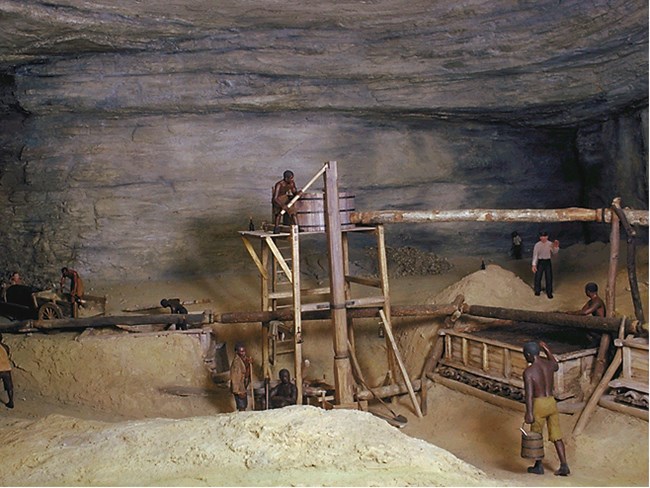
Saltpeter MiningStarting in the 18th century, enslaved African Americans worked to produce saltpeter in the depths of the cave. Saltpeter was a main ingredient in the production of black gunpowder, which proved to be vital during the War of 1812. The working conditions at the mining operation were poor. Workers were in the cave for long hours sometimes entering before sunrise and leaving after dark. Smoke from oil lanterns and fires filled the cave making it difficult to breathe, and see. They also worked in ever present cold and darkness that consistently surrounded them. These men were working towards the goal of preserving American independence and freedom — a freedom that they themselves did not enjoy. 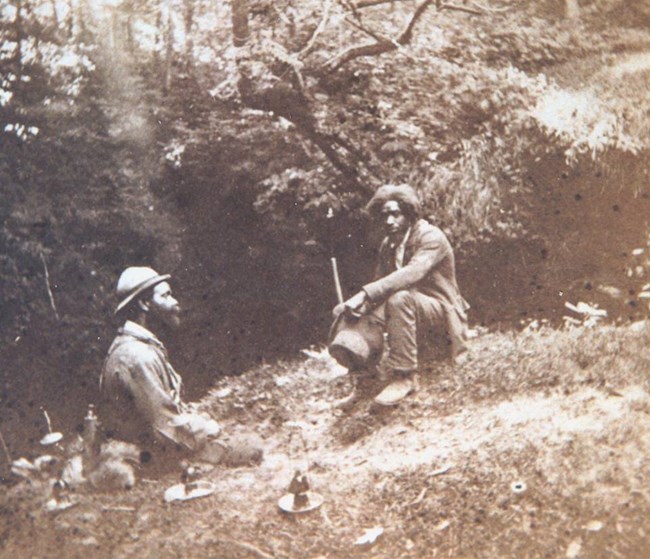
Pre-Civil War Tourism and ExplorationAfter the war ended, Mammoth Cave transitioned from a saltpeter production facility into a world-renowned tourist destination that African Americans also helped to create. Enslaved men and women worked in the Historic Mammoth Cave Hotel to clean rooms, change linens, and prepare meals. 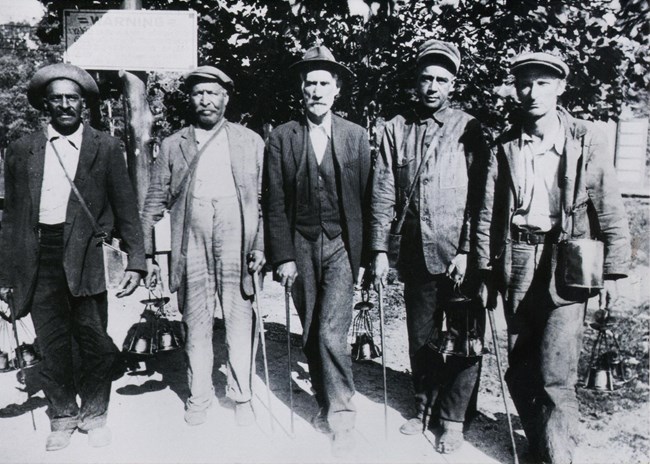
Generations of GuidesWhile the original enslaved guides in 1838 were, Stephen, Mat, Nick, and Alfred, many black guides would follow in their footsteps over the course of the next century. After the Civil War, Mat’s son - Henry, also became a cave guide, as well as Mat’s nephew, Will Bransford. Will served as the lead guide to both black and white guides during the early 1900s and represented Mammoth Cave at the 1893 World’s Fair in Chicago. It wasn’t until 2004 that the Bransford family once again officially returned to the cave. Jerry Bransford, Mat’s great-great-grandson, began working as a cave guide for the National Park Service at Mammoth Cave, continuing the family tradition. Jerry often shares stories of his ancestors experiences as enslaved and free guides with his tour groups in the very places those stories were made. Jerry has said “[I] owed myself and my ancestors my assignment at Mammoth Cave as a tour guide. I wanted to bring the Bransfords back.”
Visit our keyboard shortcuts docs for details
You might say Jerry Bransford has a unique connection to the land he grew up on. Not only does he hold a special place for the woods and waters, towns and people of Kentucky’s cave country, but he’s also spent a lifetime exploring its depths underground at Mammoth Cave National Park – just as his enslaved relatives did generations before him. 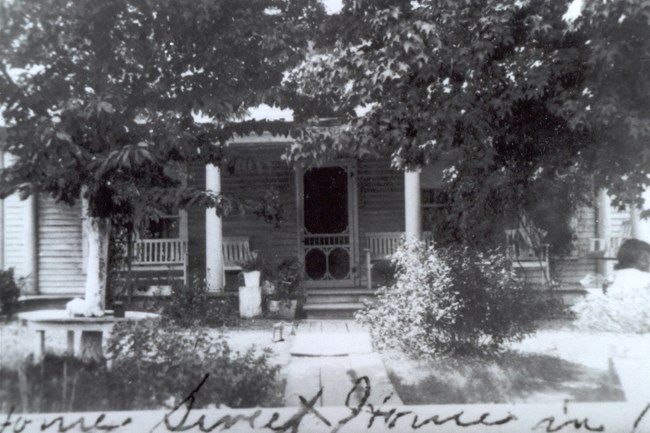
Serving the UnderservedTourism has occurred throughout the history of Mammoth Cave, but it wasn’t until after emancipation and the end of the Civil War that many businesses started to realize the potential of marketing to African Americans. This meant marketing products, services, and also vacation destinations for places such as Mammoth Cave. 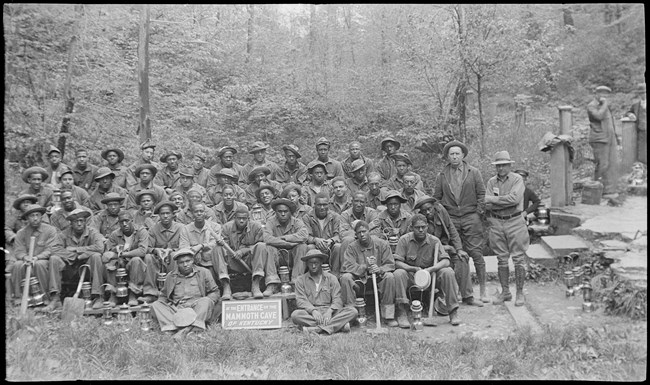
Civilian Conservation CorpsFrom 1933 to 1942, more than 2,500,000 men across the country were enrolled in the Civilian Conservation Corps (CCC), a program designed to put jobless young men to work on public land projects during the Great Depression. One of the largest CCC projects in the state of Kentucky was the development of the national park at Mammoth Cave. Mammoth Cave hosted four CCC camps including, Company 510 or “Camp #1” which was made up solely of African American men and included former tour guides Arthur and Clifton Bransford. |
Last updated: February 5, 2025
